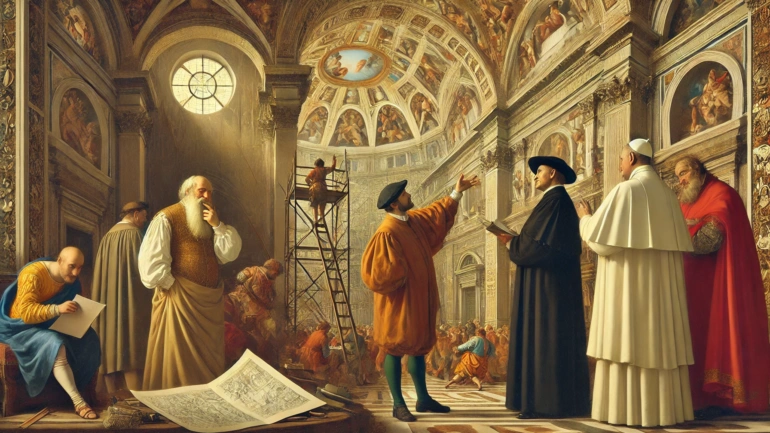In Western churches, some are lavishly decorated with gilded carvings, while others are simple, with little more than a cross inside. Today, let’s explore the reasons behind this.
The Religious Reformation and Its Influence on Art
- The architectural style of Western churches varies greatly depending on the denomination. Catholic churches are often grand and ornate, while Protestant churches tend to be more austere. Although both are Christian, this difference mainly stems from the Reformation in the 16th century.
- The Reformation was a major turning point in Christian history. At that time, Italy was composed of many small, independent states. The Pope, unlike today’s purely spiritual leader, governed the Papal States and commanded his own army. Thus, the Roman Catholic Church held great authority and invested heavily in the arts, which enabled the flourishing of the Renaissance in regions like Rome and Florence.
- While the Reformation had deep historical causes, a direct reason related to art was also evident. Pope Julius II, an ambitious leader, commissioned many grand projects for his legacy, such as Michelangelo’s Sistine Chapel ceiling and the construction of St. Peter’s Basilica. His successor, Leo X, a member of the Medici family, used indulgences to fund the costly construction of St. Peter’s Basilica.
- The sale of indulgences—a fundraising effort to complete these projects—was closely tied to the Reformation’s origins. The Church issued indulgences that allowed believers to absolve sins. Indulgences came in various forms for different sins, essentially serving as a means for the Church to accumulate wealth. The Roman Church’s internal corruption and lavish lifestyle led to widespread public dissatisfaction.
- On October 31, 1517, Martin Luther, a clergyman, posted his 95 Theses on the door of the Wittenberg Church in Germany, outlining the core ideas of the Reformation, particularly exploring the relationship between people and God. In the hierarchical Catholic Church, the average person had to reach God through clergy. However, after closely studying the Bible, Luther argued that faith in Jesus alone granted salvation and that there should be no intermediary between Christians and God.
- The Reformation led to a new denomination breaking away from Catholicism—Protestantism. Unlike Catholicism, Protestantism lacked centralized hierarchy and had numerous branches. Ideologically and structurally, Protestantism opposed Catholicism, aiming to overthrow its dominance.
- The success of the Reformation, which began with a seemingly insignificant monk, was fueled by favorable “timing, location, and support.” The “timing” refers to the anger of the public over indulgences, making it easy to rally anti-Catholic sentiment. The “location” was Germany, north of the Alps and far from the Pope’s influence, allowing Protestantism to flourish.
- “Support” refers to the protection Martin Luther received from the German king. Monarchs had complex relationships with the Pope, each viewing themselves as the rightful ruler. While the Pope saw himself as the closest to God and the ultimate authority, secular rulers believed they held true power. The German king, in particular, had severe conflicts with the Pope, and the Reformation offered a theoretical basis to oppose the Pope, which led the king to strongly support Luther.
- The advancement of printing technology also accelerated the spread of Reformation ideas. Prior to the Reformation, the Bible was written in Latin, a language the common people couldn’t understand, leaving interpretation solely in the hands of the Church. Luther translated the Bible into German and, using the printing press, distributed it widely for free, rapidly spreading these ideas among the populace.


